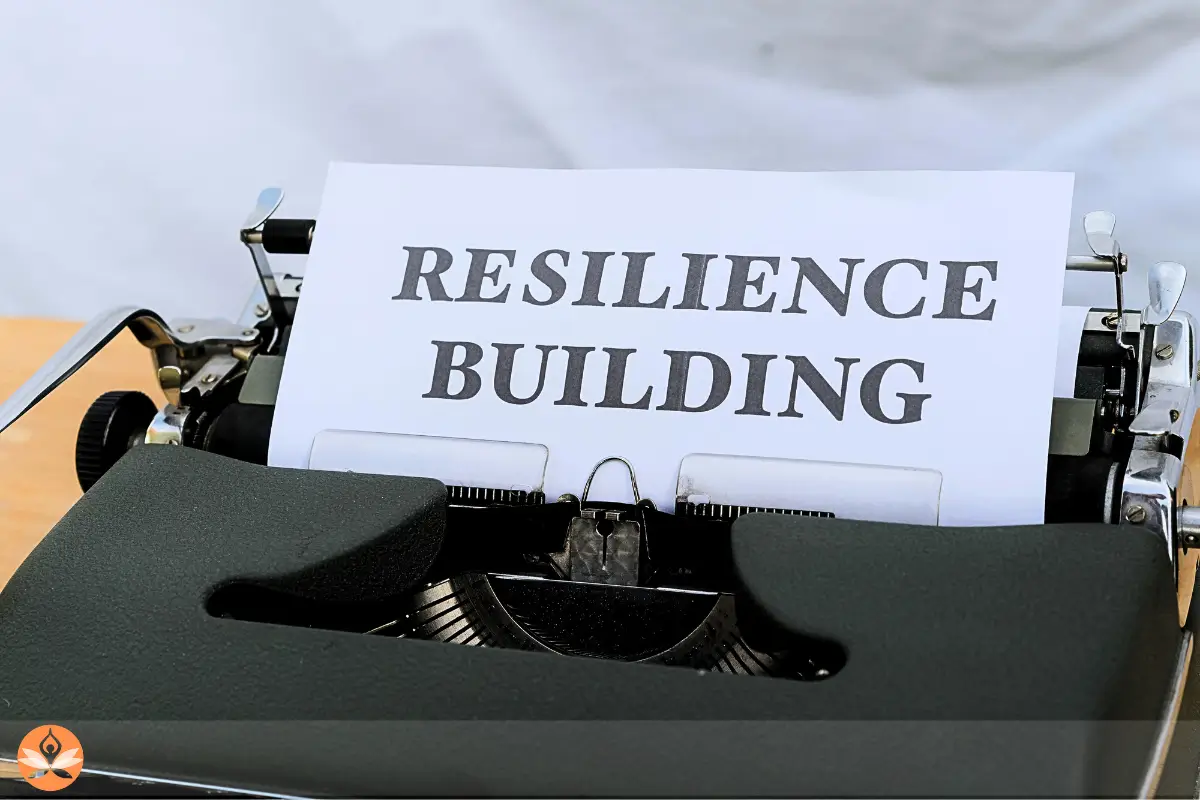The Beauty of Resilience
The concept of resilience is often vividly illustrated through the stories of those who have faced adversity. Resilience is not just about bouncing back; it’s about transforming challenges into opportunities for growth and encouraging hope. This unique beauty of resilience manifests in various forms, from personal battles against illness to broader societal struggles for justice. Here are some compelling tales that illuminate this profound human strength.
One of the most heartwarming narratives of resilience comes from individuals battling severe illness. For many, a cancer diagnosis can feel like a life-altering blow. However, countless survivors prove that fighting against such adversity can lead to unexpected personal growth. They often redefine their priorities and build deeper connections with friends and family. For example, a survivor might start a blog to raise awareness about their condition, empower others facing similar challenges, and build a community through shared experiences.
Consider the story of an athlete who faced a career-threatening injury. Injuries are common in sports, but severe ones can lead to reevaluating one’s identity. After a life-changing injury, many athletes enter rehabilitation and training with renewed vigor and focus. Take the case of a professional football player who endured a devastating knee injury; instead of letting it define his career, he channeled his energy into rehabilitating his body and mind. Consequently, he returned to the field and became a motivational speaker, inspiring others through his journey of recovery and tenacity.
Another striking example of resilience can be found in communities. Natural disasters, such as hurricanes and earthquakes, can devastate entire towns. However, the aftermath often reveals a community’s true strength. After Hurricane Katrina, New Orleans residents rebuilt homes and revitalized their cultural heritage—Music, art, and food flourished amid the ruins. The stories of individuals banding together to help one another are a testament to the collective resilience found in shared adversity. Whether through community kitchens or fundraisers, the spirit of togetherness can shine brightest when the darkness seems most profound.
- Personal Growth: Individuals often report significant changes in perspective after overcoming adversity, leading to a more fulfilling life.
- Empathy Development: Facing hardship can deepen one’s understanding of others’ struggles, fostering a greater sense of empathy.
- Strengthened Relationships: Bonds forged during tough times can emerge stronger, creating lasting support networks.
- Community Resilience: Collective commitment to overcoming challenges often leads to stronger community ties and collaboration.
The beauty of resilience is beautifully illustrated in artistic expressions as well. Many writers, musicians, and artists draw inspiration from their struggles. A poignant example is Viktor Frankl, a Holocaust survivor whose experience in concentration camps spurred him to create the influential book *Man’s Search for Meaning*. Frankl’s ability to find purpose amid unimaginable suffering makes his insights resonate deeply with readers. His narrative remains a cornerstone of understanding human resilience and the quest for meaning many undertake in the face of tragedy.
Similarly, the world of Music frequently provides solace and healing. For instance, many renowned musicians have penned autobiographies that detail their struggles with addiction, loss, and trauma. Their stories often serve as a beacon of hope for fans facing their challenges. Artists like Eminem and Lady Gaga have opened up about their battles, successfully using their platforms to advocate for mental health awareness. By sharing their journeys, they illuminate the path of resilience for millions grappling with similar struggles.
The beauty of resilience transcends mere survival; it encompasses growth, awareness, and community. Individuals rising from adversity showcase the incredible human capacity to adapt, evolve, and thrive. Their stories motivate us to face our challenges head-on and remind us that adversity can lead to remarkable transformations. Each account serves as a potent reminder that even in our darkest moments, there is an opportunity for personal and collective strength.
The legacies built through resilience—those tales of courage, creativity, and community—are worth celebrating. As we navigate our journeys, let’s draw from these narratives to foster a spirit of resilience within ourselves and encourage others to share their own beautiful stories of overcoming adversity.
Cultivating Resilience in Daily Life: Practical Strategies
Resilience isn’t merely a trait; it’s a skill that can be cultivated through deliberate practice and strategic approaches. In our fast-paced world, challenges and setbacks are inevitable. Yet, how we respond to these challenges often defines our personal growth and overall well-being. If you’re looking to foster resilience in your daily life, there are practical strategies you can adopt that make a significant difference.
Understanding Resilience
At its core, resilience refers to our ability to bounce back from stress, adversity, or challenges. It’s about maintaining a positive attitude and finding ways to cope effectively. To cultivate resilience, it’s essential to recognize that it is not a singular trait but a combination of various skills and attitudes that we can develop over time.
Strategies to Cultivate Resilience
Implementing specific strategies can enhance your ability to withstand life’s challenges. Here are several practical tips that can help you strengthen your resilience:
- Practice Self-Care: Physical, emotional, and mental health must be prioritized. Regular exercise, a balanced diet, and adequate sleep impact well-being. Activities like yoga and mindfulness meditation can also help manage stress.
- Build Strong Relationships: Surrounding yourself with supportive friends and family gives you a network to lean on during tough times. Foster connections by reaching out and offering support to others as well. Engaging in social activities strengthens these bonds.
- Maintain a Positive Outlook: Optimism can significantly impact how you handle setbacks. Focus on what you can control and view challenges as opportunities for growth. Positive affirmations and visualizations can help reinforce this mindset.
- Set Realistic Goals: Break down your goals into manageable steps. Achieving small milestones empowers you and builds confidence, making it easier to face more significant challenges. Celebrate these small victories to reinforce your sense of accomplishment.
- Embrace Change: Flexibility in the face of change is essential for resilience. Accept that change is a part of life and approach it with curiosity. Adapting to new circumstances builds your capacity to respond effectively to unforeseen challenges.
Developing Problem-Solving Skills
Being able to solve problems effectively contributes to resilience. When faced with a challenge, try to:
- Identify the problem.
- Consider different possible solutions.
- Evaluate the pros and cons of each option.
- Take action on the best solution.
- Reflect on the outcome and learn from the experience.
Mindfulness and Stress Management
Mindfulness practices in your daily routine can improve resilience by enhancing awareness and emotional regulation. Consider adopting these practices:
- Mindful Breathing: Spend a few minutes focusing on your breath. Inhale deeply, hold for a few seconds and exhale slowly. This technique grounds you and helps reduce anxiety.
- D journaling: Writing down your thoughts and feelings can provide clarity and relieve emotional stress. Date your entries and reflect on your growth over time.
- Gratitude Practices: Remember to acknowledge things for which you are grateful. This practice shifts your focus from what’s wrong to appreciating the positive aspects.
Building a Resilient Mindset
A resilient mindset involves adapting to challenges and viewing failures as an everyday learning process. To build this mindset:
- Reframe negative thoughts into positive ones.
- Focus on strengths instead of weaknesses.
- Accept that setbacks are temporary.
Staying Committed to Growth
Resilience is developed slowly; it takes time and consistent effort. You can enhance your resilience by committing to personal growth and applying these strategies daily. Here’s a quick checklist to keep you accountable:
- Are you engaging in self-care routines?
- Are you nurturing your relationships?
- Are you practicing mindfulness regularly?
By implementing these strategies and regularly checking in with yourself, you can cultivate the beauty of resilience in your daily life. It’s not about avoiding difficulties but learning to adapt and thrive in the face of them.
The Impact of Resilience on Mental Health and Well-Being
Life is full of challenges, and our ability to navigate these obstacles speaks volumes about our mental health and well-being. Resilience, often described as the capacity to recover quickly from difficulties, plays a vital role in shaping how we cope with stress and adversity. In trials and tribulations, the beauty of resilience shines bright, offering pathways to mental wellness.
Understanding resilience involves recognizing its multidimensional nature. It isn’t merely about enduring hardships; it encompasses our ability to adapt, learn, grow, and thrive in the face of adversity. Here are some key elements that contribute to resilience:
- Positive Relationships: Building strong connections with family and friends fosters a support system vital for emotional stability.
- Emotional Awareness: Recognizing and understanding our feelings allows us to manage our emotions effectively.
- Problem-Solving Skills: Developing strategies for overcoming challenges enhances our ability to tackle issues head-on.
- Self-Efficacy: Believing in our capabilities boosts our confidence, making us more likely to face difficulties.
- Flexibility: Adapting to change is crucial; embracing new circumstances can lead to innovative solutions.
Research highlights significant correlations between resilience and improved mental health outcomes. Individuals who exhibit resilient traits often experience lower levels of anxiety, depression, and stress-related disorders. The following table illustrates the impact of resilience on mental health indicators:
Mental Health Indicator Low Resilience High Resilience
Anxiety Levels High Low
Depression Rates Elevated Reduced
Stress Response Intense Moderate
Overall Life Satisfaction Lower Higher
Resilience enhances our psychological state and is linked to physical health. Many studies suggest that resilient individuals tend to engage in healthier lifestyles. They are more likely to practice self-care, exercise regularly, and maintain balanced diets. This holistic approach to health illustrates a profound connection between our mental fortitude and physical well-being, creating a positive feedback loop.
Building resilience is a proactive process. Here are some strategies to cultivate resilience in daily life:
- Practice Self-Care: Prioritize physical health through exercise, nutrition, and adequate sleep.
- Foster Social Connections: Maintain and develop meaningful relationships that provide support and encouragement.
- Engage in Mindfulness: Techniques like meditation and deep-breathing exercises can enhance emotional regulation.
- Set Realistic Goals: Break down larger objectives into manageable tasks, celebrating small victories.
- Cultivate a Positive Mindset: Focus on strengths and past successes to empower yourself during tough times.
Furthermore, building resilience is not limited to individual efforts. Communities play an essential role in fostering a culture of resilience. Supportive environments, whether at work, school or within neighborhoods, promote resilience through collective efforts. Strengthening community ties, offering resources, and encouraging open dialogues about mental health can diminish stigma and offer individuals the courage to seek help.
The impact of resilience on mental health and well-being cannot be overstated. It is a dynamic quality that can be cultivated over time, influencing how we cope, adapt, and ultimately thrive in adversity. Understanding and nurturing our resilience unlock the beauty of personal growth and well-being, leading to a more fulfilling life.
Artistic Expressions of Resilience: How Creativity Strengthens Us
Art has long served as a vessel for human emotion and expression. Among its many functions, creativity acts as a powerful tool for resilience. It allows us to process adversity, confront our struggles, and grow stronger. Through various artistic expressions, individuals can channel their experiences into something profound, fostering a sense of connection and understanding. The beauty of resilience manifests in countless ways, offering therapeutic benefits that elevate the spirit and renew hope.
When faced with obstacles, many people turn to different art forms, whether painting, writing, Music, or dance. These creative pursuits provide not only an outlet for frustration but also an opportunity for personal exploration and growth. Here’s how various artistic expressions of resilience come into play:
- Visual Arts: Painting and sculpture can powerfully depict personal journeys. Artists often translate their emotions and trials into vivid images, showcasing their struggles and triumphs.
- Literature: Writing can be profoundly cathartic. Authors frequently draw upon their life experiences to craft narratives that resonate with others. This shared vulnerability helps create a community among readers and writers alike.
- Music: Lyrics often mirror the human condition. Composers and songwriters express their resilience through melodies and rhythms, providing solace for listeners navigating similar paths.
- Performing Arts: Dance and theater present the opportunity to embody resilience physically and psychologically. Performers channel their emotions into movement, creating a visual representation of the complexities of life.
The act of creating can be therapeutic in itself. Studies show artistic endeavors can reduce stress, alleviate depression, and enhance well-being. Creative expression promotes mindfulness, allowing individuals to stay present and navigate their feelings without judgment. This immersion in the moment will enable people to gain clarity and perspective on their circumstances.
One fascinating example of this enduring relationship between creativity and resilience can be seen in community art initiatives. These programs often foster healing through collective expression. Group murals, theater productions, or collaborative writing projects empower participants by giving them a voice and a sense of agency. Through community engagement, barriers dissolve, allowing those affected by hardship to connect and share their stories.
A helpful illustration of the impact of art on mental health can be found in various studies indicating the benefits across different age groups:
Age GroupArt FormBenefit
Children Drawing Improved emotional expression and reduced anxiety
Teens Music Enhanced social connectedness and self-esteem
Adults Creative Writing Coping mechanism for trauma and grief
Seniors Dance Enhanced cognitive function and social engagement
The beauty of resilience through artistic expression does not lie solely in the final product; it resides in the journey of creation itself. Each brush stroke, a note played, or a word penned reveals layers of emotion, resilience, and identity. Through the process, individuals confront their struggles head-on, armed with their creativity as a shield. The resilience showcased in art offers a glimpse of hope and strength to others who may be struggling in silence.
Moreover, sharing artistic expressions can bridge the gap between experiences. When artists unveil their stories through their work, it fosters a sense of community. Audiences connect with these expressions, often finding comfort in shared experiences. They recognize that resilience is a universal theme—it transcends cultures, social classes, and individual circumstances.
Ultimately, embracing creativity as a resilient response to hardship transforms the narrative of struggle into one of growth and empowerment. We celebrate our humanity through artistic expressions, learn from our experiences, and connect with others. In a world often marred by challenges, the arts remind us that we have the power to rise, create, and thrive, illustrating resilience’s undeniable beauty.
Resilience in Nature: Lessons from the Environment on Endurance
The natural world is a canvas painted with stories of endurance, survival, and vibrant resilience. Within ecosystems, countless species demonstrate the incredible ability to adapt and thrive, even in adversity. Observing the patterns of resilience in nature provides profound lessons that translate to human experiences and inspire us to navigate our challenges.
Take, for instance, the mighty oak tree. Despite harsh weather conditions, it stands tall, with roots that dig deep into the ground. This tree showcases not only physical strength but also nature’s adaptability. Strong winds and severe storms may strip away its leaves, but the oak remains firmly rooted, ready to regrow once the storm passes. This tenacity symbolizes the essence of resilience; it encourages us to establish our foundations and dig deep during trying times.
In arid regions, the cacti stand as a testament to endurance. These plants thrive in conditions where many others perish. They exhibit an impressive ability to conserve water, store nutrients, and protect themselves from harsh sun rays. By employing unique adaptations, cacti demonstrate that resilience often requires clever strategies and a willingness to transform how we respond to adversity. Like the cacti, we can harness our inner strength and find innovative ways to cope with life’s challenges.
Likewise, the migration patterns of specific bird species present another striking example of resilience. Birds like the Arctic Tern undertake exhaustive journeys across vast distances to find food and suitable breeding grounds. In doing so, they display resilience and collaboration, traveling in flocks to share the burden of long migrations. Their journey underscores the importance of community support. When faced with overwhelming challenges, leaning on others and working together can lighten our loads and elevate our spirits.
Here are some critical lessons about resilience from nature:
- Adaptability is Key: Just as environments change, the ability to adapt is crucial for survival.
- Build Strong Roots: Like trees with deep roots, establishing a solid foundation in life can help withstand storms.
- Utilize Resources Wisely: Creatures like cacti remind us to manage our resources carefully, especially during tough times.
- Community Matters: The importance of teamwork and support systems can’t be overstated, as shown in the flocking behaviors of migratory birds.
- Embrace Change: Nature teaches us that change is inevitable, and embracing it can lead to growth and new opportunities.
Even the oceans reveal profound teachings about resilience. Coral reefs serve as a significant example of interconnectedness and symbiosis. While beautiful and intricate, coral reefs face climate change, pollution, and overfishing threats. However, coral systems’ resilience—through regeneration and adaptation—highlights the potential for recovery with proper care and nurturing. This echoes the importance of safeguarding our well-being by creating healthy environments, be it in our communities or workplaces.
Animals also embody resilience through their life cycles. For example, the salmon’s arduous journey upstream to spawn illustrates determination and instinct. Despite facing numerous obstacles—like rapids, predators, and even exhaustiveness of migration—the salmon press on with relentless pursuit. This relentless struggle not only fosters their survival but also fortifies the ecosystem. It reminds us that persistence and resilience can lead to rewarding outcomes even when faced with seemingly insurmountable obstacles.
Natural ExampleLesson on Resilience
Oak Tree Strength and adaptation to adversity
Cacti Conservation and Innovative Coping Strategies
Arctic Tern Community collaboration during challenges
Coral Reefs Interconnectedness and the need for nurturing
Salmon Persistence in the face of obstacles
Nature’s resilience teaches us invaluable lessons that transcend the physical realm. By observing and embracing the innate ability of organisms to persist, adapt, and thrive against the odds, we gain insights into our capabilities. As we strive to embody this resilience, we can find strength in our roots, adapt like the cacti, support one another like migratory birds, and learn to embrace change with open arms. Indeed, the beauty of resilience is found in nature and reflected in everyone, waiting to be discovered and nurtured.
Conclusion
Resilience manifests in myriad forms, walking hand-in-hand with the stories we tell, the strategies we adopt, and the inspirations we draw from various aspects of life. The beauty of this remarkable trait lies not only in its individual stories of overcoming adversity but also in our ability to cultivate resilience in the everyday rhythms of our lives. By nurturing resilience, we equip ourselves to face life’s challenges head-on and foster a profound sense of mental health and overall well-being.
The tales of those who have triumphed over hardships remind us that strength is often born from struggle. Each narrative adds a brushstroke to the larger canvas of human experience, illustrating how resilience can turn pain into power. These stories inspire us, demonstrating that individuals can rise and create lives filled with purpose and meaning despite obstacles. While the journey may vary from person to person, the underlying theme remains consistent: resilience is fundamentally about facing adversities, learning from them, and emerging stronger. Whether it’s a personal combat against illness, a professional setback, or emotional turmoil, stories of resilience resonate deeply, reminding us that hope remains alive even in the darkest times.
To harness this beauty in our own lives, we can incorporate practical strategies to cultivate resilience. Small yet impactful daily habits, such as practicing mindfulness, maintaining a healthy lifestyle, and fostering strong relationships, are critical in building our resilience toolkit. These strategies not only help us bounce back but also allow us to thrive in the face of life’s inevitable challenges. Building resilience is an ongoing process; it requires intention and commitment. By prioritizing our mental and emotional health and engaging in self-care practices, we learn to navigate the unpredictable waters of life with greater ease and confidence.
Moreover, the profound impact of resilience on mental health cannot be overstated. Studies indicate that resilient individuals often experience lower levels of stress, anxiety, and depression. By fostering a resilient mindset, we create a supportive internal environment that allows us to confront challenges with optimism and courage. This empowerment significantly enhances our emotional well-being, paving the way for a fulfilling and balanced life. Recognizing the importance of resilience in promoting mental health is essential for individuals and communities alike. As we work together to cultivate resilience, we foster a culture where people can thrive, embracing both the joys and challenges life presents.
Artistic expression serves as another powerful avenue for showcasing resilience. Whether through painting, writing, Music, or dance, creativity often reflects our inner battles and triumphs. Artistic endeavors allow us to process our emotions and experiences, transforming pain into beauty. This form of expression is therapeutic for the creator and relatable for those who observe. Artists often draw from their experiences, using their work to connect with others and illustrate the resilience of the human spirit. The beauty found in creative expressions of resilience unites us, urging us to appreciate our shared struggles and aspirations.
Nature, too, serves as an incredible teacher in the realm of resilience. The environment repeatedly illustrates that endurance is woven into the fabric of life. Trees bend yet do not break, flowers bloom after harsh winters, and ecosystems adapt and thrive amidst challenges. Observing these natural processes can remind us of our capacity for resilience. Nature’s resilience inspires us to embrace our imperfections, understand that growth often follows adversity, and find strength in embracing life’s seasons. By learning from the remarkable endurance of the natural world, we can apply these lessons to our own lives and cultivate a deeper appreciation for resilience in all its forms.
Ultimately, the beauty of resilience is found in its universal presence and profound impact on our lives. From personal stories of struggle to the strategies we implement daily, resilience is a tapestry woven into the essence of what it means to be human. Recognizing and celebrating resilience fosters a culture that values perseverance, creativity, adaptability, and strength. Each step we take towards cultivating resilience enriches not only our lives but also the lives of those around us. Embracing this beauty empowers us to create narratives of hope and transformation, enabling us to face our challenges with renewed vigor and an unwavering belief in the strength of the human spirit.










